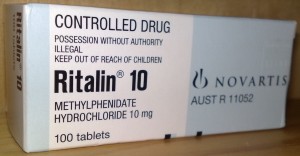by Thomas Armstrong, PHD – ICPA.org:
Thousands of studies tell us what children with ADHD can’t do, but few tell us what they can do. This article presents holistic strategies for helping children with ADHD succeed at home and in school by building on their interests, learning styles, and many talents.
Eight-year-old Billy, in the front row, will have nothing to do with my demonstration on new techniques for teaching spelling. During my visit to his elementary school classroom in upstate New York, Billy is out of his seat during most of the lesson. When I ask the children to visualize their spelling words, however, I am amazed to see Billy return to his seat and remain perfectly still. Covering his eyes, Billy “looks” intently at his imaginary words—fascinated with the images in his mind!
Later on, I realize that something more important than a spelling lesson went on that afternoon: Billy was able to transform his external physical hyperactivity into internal mental motion and, by internalizing his outer activity level, was able to gain control over it. This incident occurred some time ago but remains memorable to me. Why? Because it suggests that internal empowerment, rather than external control, is often the best way to help kids diagnosed with ADHD.
A Decidedly Unholistic Approach
Much of the current work in the field of ADHD looks at the issue from an external control perspective. The two interventions touted in almost all books and programs about ADHD are medication and behavior modification. While these approaches are often dramatically effective in young people with ADHD, both have troubling features that often receive scant attention. Some researchers suggest that when children receive medication, they may attribute their improved behaviors to the pills rather than to their own inner resources (Whalen & Henker, 1990). Others may expect the medication to do all the work and thus neglect underlying issues that may be the true causes of a child’s attention and/or behavior difficulties.
Behavior modification programs, which abound, seek to control children’s behaviors through some combination of rewards, punishments, or response costs (the taking away of rewards). Some programs rely on token economy systems, while others use behavior charts, stickers, and even machines. For example, the Attention Training System sits on a child’s desk and automatically awards a point every 60 seconds for on-task behavior. The teacher can also deduct points for bad behavior using a remote control. Students trade points for prizes and privileges. Although behavior modification programs may influence children to change their behavior, they do it for the wrong reason: to get rewards. Such programs can discourage risk-taking, blunt creativity, decrease levels of intrinsic motivation, and even impair academic performance (Kohn, 1993).
Looking at the Whole Child
Most ADHD researchers and practitioners see children labeled with ADHD in terms of their deficits. Thousands of studies tell us what these kids can’t do, but few tell us what they can do and who they really are. Two exceptions are Crammond (1994) and Hartmann (1993). Where are the studies that tell us what these kids are interested in, what kinds of positive teaming styles or combinations of intelligences they use successfully in the classroom? What sorts of artistic, mechanical, scientific, dramatic, or personal contributions can they make to their schools and communities?
A new vision of educational interventions is needed to reflect a deeper appreciation for the whole child based on a wellness paradigm, rather than a deficit perspective rooted in a medical or disease-based model. We need to initiate a new field of study to help children with behavior and attention difficulties—one based on discovering their strengths rather than fixing their faults. Parents and teachers tell me about cases of ADHD-labeled kids who are talented dancers, musicians, sculptors, and dramatists. The ADHD community needs to conduct research on the positive qualities of these children and what their abilities could mean in contributing to their success in the classroom and in life.
Such research could develop assessment strategies geared toward identifying their inner capabilities. Gardner’s theory of multiple intelligences (1983) is one possible framework for developing appropriate assessment instruments to help identify such abilities—a refreshing change from the behavior rating scales and artificial performance tests currently used to assess ADHD in children. We must develop individualized educational plans (IEP) that give more than lip service to a child’s strengths and have goals and objectives that solidly reflect a desire to help children achieve success, rather than to “overcome their problems.”
While the ADHD worldview tacitly approves of a teacher centered, worksheet- and textbook-driven model of education (almost all of its educational suggestions are based on this kind of classroom), current research suggests that all students benefit from project-based environments in which they actively construct new meanings based on their existing knowledge of a subject. Some research suggests that students with ADHD do better in environments that are active, self-paced, and hands-on (McGuinness, 1985). Video games and computers are powerful teaming tools for many of these children. In fact, their high-speed behavior and thinking lend themselves quite well to such cutting-edge technologies as hypertext and multimedia (Armstrong, 1995).
Finally, interventions need to go beyond strategies such as smiley faces, points, and medications, and reflect a full sense of the child’s true nature.
Article originally posted at ICPA.org.
